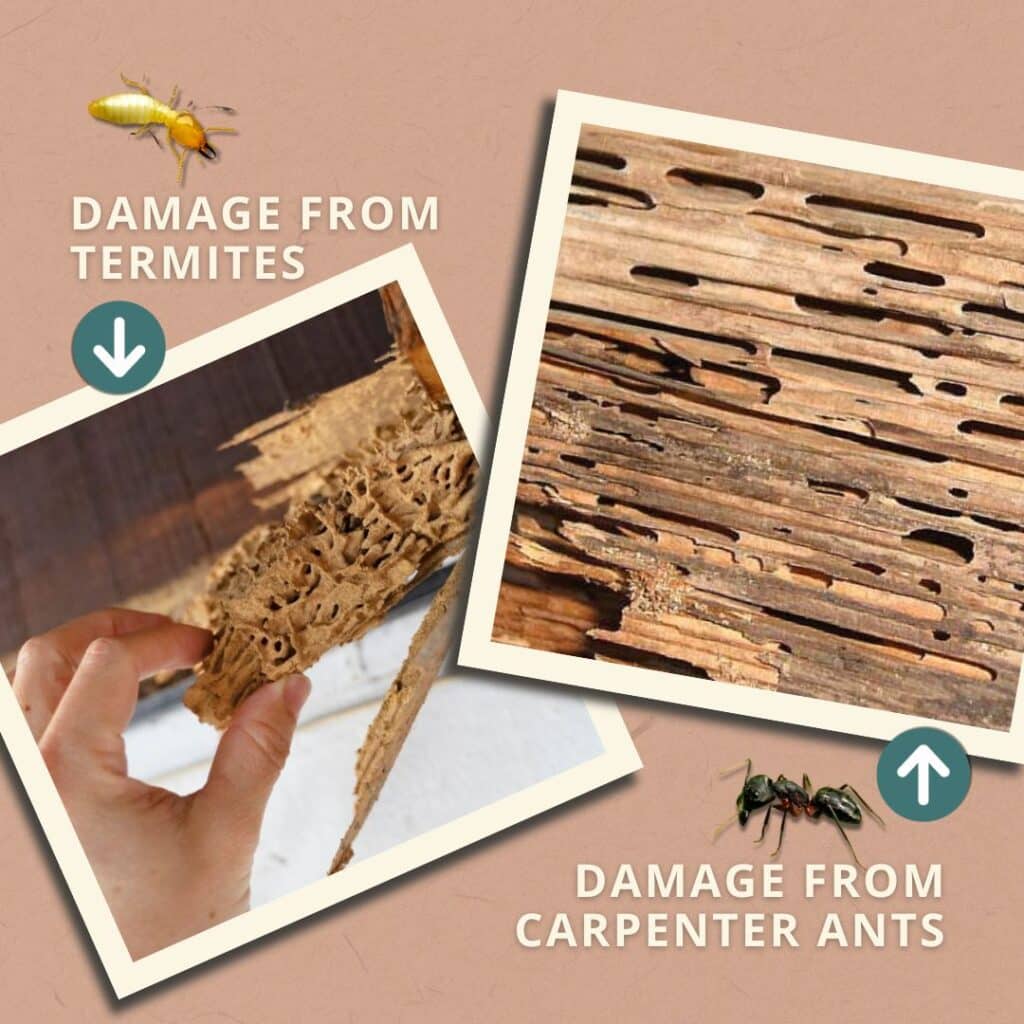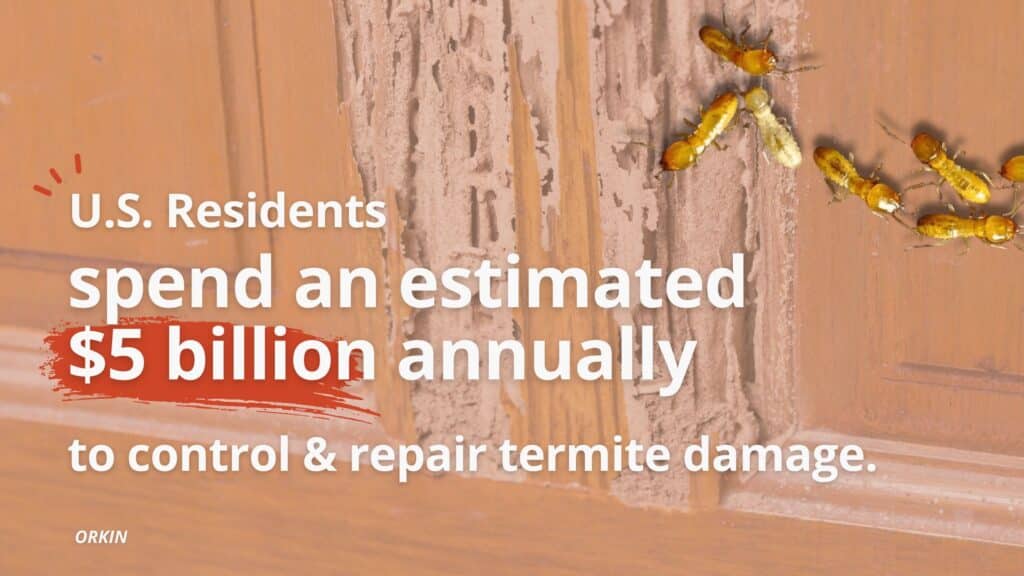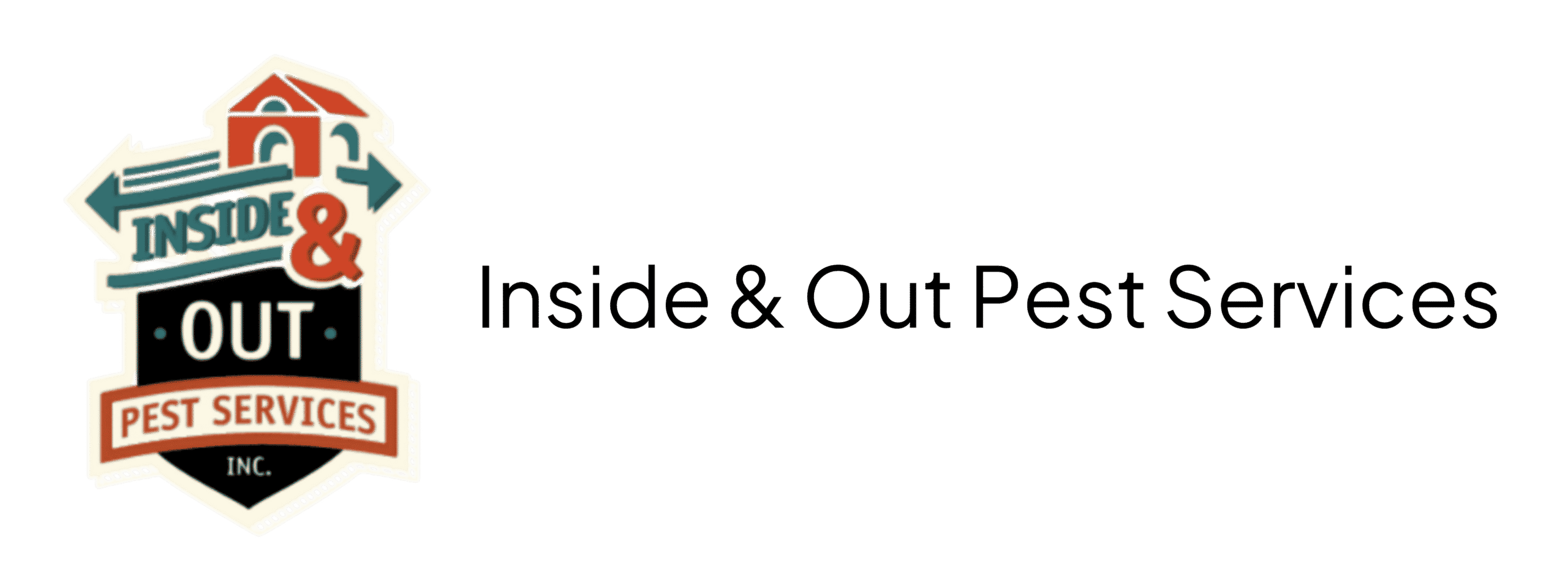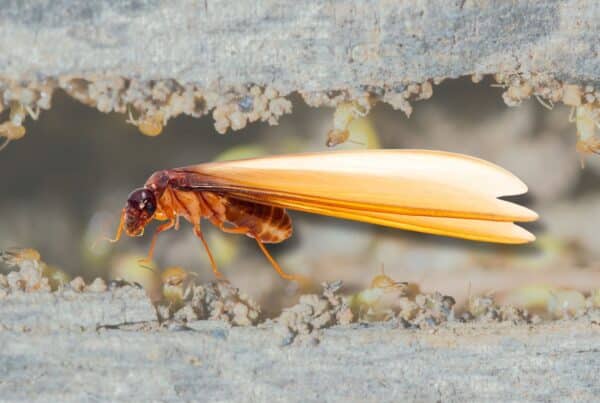Think you’ve got bugs chewing through your home? Whether it’s a few tiny wings by the windows or some odd sawdust piles near baseboards, you might be looking at a bigger problem. The real question is—what are you dealing with and how can you tell termites vs carpenter ants?
These two pests often get mistaken for one another, but the type of damage they do (and how you should handle them) is totally different. Here’s how to tell them apart, spot early warning signs, and keep them far away from your home.
What’s the Main Difference?
Let’s clear up the biggest confusion first: carpenter ants and termites both hang around wood, but only termites eat it.
| Feature | Carpenter Ants | Termites |
| Waist | Narrow (pinched) | Broad (straight) |
| Antennae | Bent (elbowed) | Straight |
| Wings (swarmers) | Back wings shorter | All wings same length |
| Leave behind | Frass (wood shavings) | Mud tubes & droppings |
| Damage style | Tunnels for nesting | Hollowed wood eaten from inside |
Carpenter ants dig through damp or soft wood to build nests—they’re not eating it, just remodeling. The result? Hollow tunnels and little piles of frass (wood shavings mixed with waste) near windows, baseboards, or attics.
Termites, on the other hand, feed on wood 24/7. They break it down for food and slowly weaken your home from the inside out.
How Each Pest Damages Your Home
While the methods of how carpenter ants vs termites can weaken your home’s structure vary, both certainly will—especially if the problem goes unnoticed.
Carpenter ants prefer damp or rotting wood. Over time, they hollow out beams, window frames, and wall voids. If left untreated, this can lead to sagging floors, warped walls, or door frames that don’t close properly.
Termites are more destructive. They eat the wood from the inside, which can cause sudden collapses or severe damage without warning signs. Termite damage is often harder to spot until it becomes expensive.

How to Spot the Signs of Termites vs Carpenter Ants
You don’t have to see bugs crawling to know you’ve got a pest problem. Both termites and carpenter ants leave behind clear signs—you just have to know what to look for.
Carpenter ant clues often show up as:
- Large, dark ants inside your home—especially in kitchens, bathrooms, or crawlspaces
- Rustling or scratching noises coming from the walls
- Small piles of sawdust (called frass) near baseboards or window frames
- Winged ants appearing indoors, especially during warmer months
Termite activity can be sneakier. Look for:
- Mud tubes running up foundation walls or across joists
- Discarded wings near windows or doors
- Paint that bubbles or peels for no clear reason
- Wood that sounds hollow when you tap on it
And here’s a hard truth: termite infestations affect around 600,000 homes in the U.S. every year, according to the U.S. Department of Agriculture.
If you’re seeing any of these signs, don’t wait. The longer they’re in your home, the more they’re tearing it apart.
Why They’re Attracted to Homes
Both carpenter ants and termites have a type—and your home might just check all the boxes.
What do they love most? Moisture. Leaky pipes, clogged gutters, damp crawlspaces—these are perfect spots for pests to settle in and start causing damage. In fact, the NPMA lists moisture issues as one of the top causes of pest infestations nationwide.
They’re also drawn to:
- Firewood or lumber stacked directly against your house
- Decks or fences with wood-to-soil contact
- Overgrown shrubs or tree branches touching your siding
- Foundation cracks or unsealed gaps around pipes or vents
- Mulch piled too close to the exterior walls
If your home offers easy access and a steady water source, you’re basically rolling out the welcome mat.

Easy Ways to Keep Them Out
You don’t need to overhaul your whole property to make a big difference. A few simple fixes can go a long way in keeping ants and termites off your radar.
- Fix any leaks—whether it’s under a sink or on the roof
- Store firewood at least 20 feet from your house and off the ground
- Trim back bushes, trees, and anything else touching your siding
- Seal up gaps, cracks, and crevices—especially near windows and doors
- Use pressure-treated wood for outdoor structures like decks and fences
- Clean your gutters so water flows away from your home, not toward it
The goal is to make your home dry, sealed, and hard to reach. That alone can send pests looking for an easier target.
Keep Up With Home Maintenance
Preventing pests isn’t just about what you do once—it’s about what you keep doing.
Make it a habit to check your attic, crawlspace, or basement a few times a year. Look for moisture, soft wood, or signs of pests like frass or mud tubes. Replace any rotting wood right away, reseal gaps or cracks, and keep outdoor areas clear of debris or mulch buildup.
It’s simple, but it works: a well-maintained home is harder for pests to invade and easier to protect long-term.
When It’s Time to Call a Pro
There’s only so much you can (or should) handle on your own. If you’re seeing signs of damage, swarming insects, or pests that just keep coming back, it’s time to bring in expert help.
At Inside & Out Pest Services, we don’t just spray and hope for the best. Our team:
- Identifies the exact pest and pinpoints where it’s coming from
- Targets the source with proven treatments
- Helps fix the conditions that allowed the infestation in the first place
- Creates a long-term prevention plan tailored to your home
The sooner we can step in, the sooner you can stop the damage and start protecting your property—without the guesswork.
Final Thoughts
Telling carpenter ants vs termites might seem unnecessary, but the damage they cause adds up fast so you should have the right solution from the start. Now that you know what to look for and how to stop them, you’re already ahead of most homeowners.
If you’re still unsure what’s causing the damage—or you’re ready for answers—schedule a pest inspection with Inside & Out Pest Services today. We’ll help you take care of what’s lurking behind the walls and make sure your home stays strong, safe, and pest-free.



